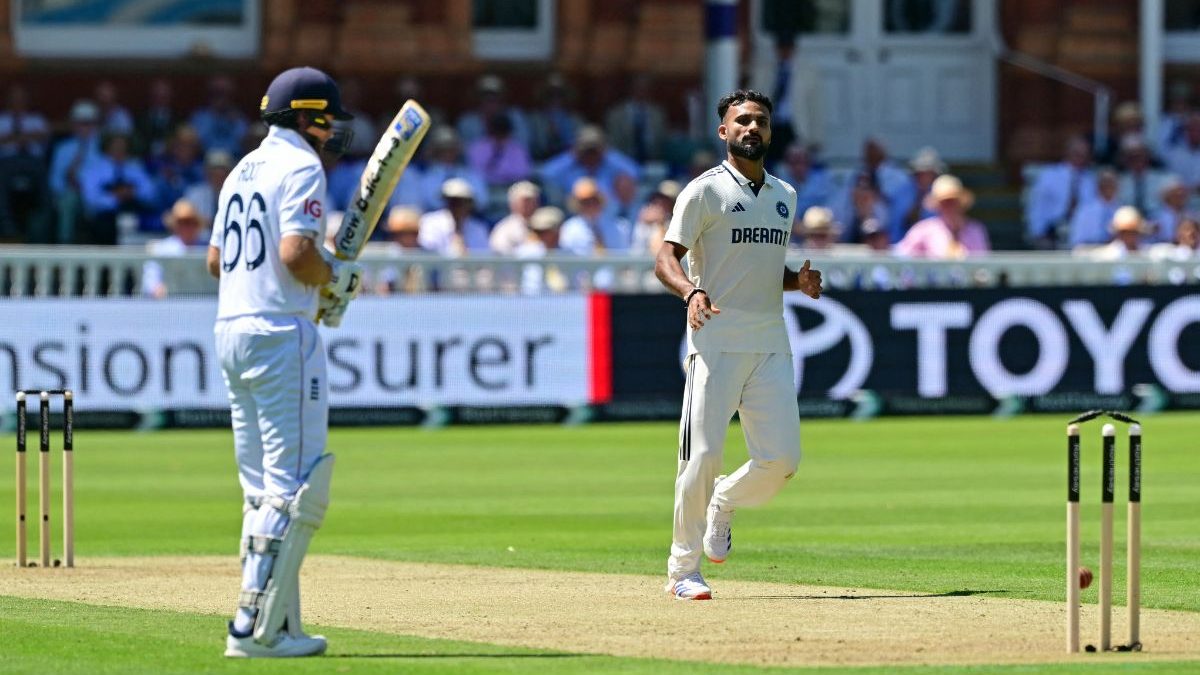Lord’s Cricket Ground in London is one of the most famous cricket stadiums in the world. But it’s not just known for its rich history or iconic matches. There is also something unusual in the middle of the field called the ‘slope.’ As India and England battle it out in the 3rd Test of their five-match series , let’s learn what is the slope at Lord’s and how it impacts the games played there.
What is the slope at Lord’s?
The slope at Lord’s is a natural tilt in the ground. According to Marylebone Cricket Club (MCC), the owner of Lord’s, the slope runs from the north-west (Pavilion End) to the south-east (Nursery End), dropping around 2.5 metres (8 feet 2 inches) across the field. There’s no other cricket ground in the world with such a drop. The Lord’s Ground has kept this slope intact since it was built in 1814.
How does the slope affect the game?
The slope influences all departments of the game, including bowling, batting, and fielding. For fast bowlers, it can help swing or seam the ball depending on the angle and the end they are bowling from. Batters may find odd deliveries looking good to leave but suddenly behaving in unexpected ways due to the slope.
Former England seamer Angus Fraser, who played many matches for Middlesex at Lord’s, explained how the slope impacts games.
“It’s pretty obvious that if you were building a cricket ground from scratch, you wouldn’t have a slope like this. But it’s something that’s there because it’s been the nature of that piece of land for thousands of years. It flows down from Hampstead Heath (the city’s highest point at 139m/456ft above sea level) into central London and eventually ends up in the River Thames,” he told The Athletic.
“It’s pretty unique. Grounds in most other countries are newer and pretty flat, but there are similar things on other English cricket grounds. You run down a hill from the Kirkstall Lane End at Headingley (in Leeds), and there’s a bit of a slope downhill at (Nottingham’s) Trent Bridge, but I can’t think of a slope like Lord’s across the ground,” he added.
Impact Shorts
More ShortsThe slope also makes things difficult for the wicketkeeper and slip fielders. When the ball goes past the batter, it can dip or change direction slightly, which is why the wicketkeeper, like India’s Rishabh Pant in this match, is expected to stay low and be ready to move quickly, especially off fast bowlers.
For slip fielders, even a good edge might not travel straight or high enough. Judging where the ball is going becomes harder. India captain Shubman Gill and KL Rahul dropped tough chances because the ball dipped a little after hitting the edge of the bat in the first session of the 3rd Test on Thursday.
India vs England 3rd Test
As far as the match is concerned, England won the toss and elected to bat first. At the time of writing this story, England are 81/2 in 23.3 overs. Nitish Reddy dismissed both openers, Zak Crawley and Ben Duckett, in the same over. Joe Root and Ollie Pope are currently trying to rebuild for the home side.
)